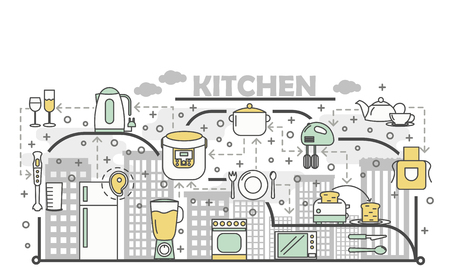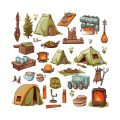Introduction to Indian Kitchen Culture in the Outdoors
When you step into the wilds of India, with the sky as your roof and earth as your mat, food becomes more than just sustenance—it transforms into a celebration of togetherness. The Indian kitchen culture, steeped in centuries-old traditions, finds new life under the open skies during camping adventures. Here, the heart and soul of Indian food traditions beat strongest: every spice tossed, every dough rolled, and every meal shared tells a story of community and connection. Whether it’s a smoky dal simmering over an open fire or chapatis puffing on a makeshift tawa, outdoor cooking in India is always a group affair. The significance of this communal approach is profound; it breaks barriers, forges friendships, and turns every campsite into a vibrant desi kitchen. As you gather around the campfire with fellow trekkers—some local, some from far-off states—cooking becomes not just about eating but about weaving bonds and sharing laughter amidst the backdrop of rugged hills or lush forests. This spirit of collective effort and joy is what truly defines Indian kitchen culture during adventurous camping trips.
2. Setting Up the Camp Kitchen: Chulha, Tandoor & Handi
When it comes to camping in India, creating an authentic kitchen setup is a crucial part of the group cooking experience. Unlike modern gas stoves or portable burners often seen in Western campsites, Indian campers love to recreate traditional cooking methods that remind them of their roots. The magic lies in setting up the chulha, tandoor, and handi—each bringing its own charm and flavour profile to the food.
The Chulha: Heart of Indian Outdoor Cooking
The chulha is a simple clay or mud stove, usually built directly on the ground using locally sourced soil and cow dung. It’s designed to hold firewood underneath, providing a slow and even heat perfect for making rotis, curries, and chai. While camping, adventurers often dig a shallow pit and use bricks or stones to shape a temporary chulha. This process not only adds a smoky aroma but also brings everyone together as each person takes turns fanning the flames and tending to the food.
The Tandoor: Clay Oven Delights Under Open Skies
No Indian group cooking session feels complete without the iconic tandoor. Traditional tandoors are large clay ovens used for baking breads like naan and tandoori rotis, as well as grilling marinated meats and paneer. On camping trips, a makeshift tandoor can be created by digging a deep hole lined with clay or using portable metal drum tandoors. The thrill comes from skewering marinated goodies onto metal rods and roasting them over hot coals—a ritual where friends gather round, sharing stories while waiting for those charred delicacies.
The Handi: Stewing Stories Around the Fire
A handi is a wide-mouthed earthen or metal pot, traditionally used for slow-cooking biryanis, dals, and kormas. In an outdoor camping environment, placing a handi directly over glowing embers lets flavours infuse deeply into every grain of rice or chunk of meat. Campers often surround the handi with stones for stability and cover it with dough or cloth to trap the aroma inside—a communal experience where anticipation builds as everyone peeks under the lid.
Traditional Equipment vs Camping Adaptations Table
| Traditional Item | Home Use | Camping Adaptation |
|---|---|---|
| Chulha (Clay Stove) | Permanently built in kitchens; uses cow dung/wood as fuel | Pit in ground with bricks/stones; uses gathered firewood/dried leaves |
| Tandoor (Clay Oven) | Large clay barrel fixed in backyard; charcoal/wood fired | Dug pit lined with clay or portable metal drum; campfire coals |
| Handi (Cooking Pot) | Ceramic/metal pot on home stove; steady flame control | Ceramic/metal pot on embers surrounded by stones; covered with dough/cloth for sealing |
Bringing People Together Through Tradition
The joy of setting up these traditional cooking stations during an Indian camping trip goes beyond just preparing food—it’s about bonding over shared tasks, laughter echoing around flickering flames, and passing down culinary wisdom from elders to youngsters. The blend of old-school techniques and outdoor resourcefulness makes every meal cooked this way unforgettable.

3. Spice Talk: Packing and Prepping Masalas in the Wild
Any true Indian camping experience is incomplete without the intoxicating aroma of masalas wafting through the forest air. After all, it’s the masala dabba (spice box) that transforms a basic meal into a celebration of Indian kitchen culture—even miles away from home. Carrying the right spices is not just about taste; it’s about keeping traditions alive and bringing everyone together around the campfire.
Essential Spices to Pack for Camping
When heading into the wild, keep your spice kit simple but powerful. Must-haves include jeera (cumin), dhaniya powder (coriander), haldi (turmeric), lal mirch (red chilli powder), and garam masala. Don’t forget salt and black pepper for everyday use. For South Indian campers, a small pouch of sambar powder or rasam powder does wonders. North Indians might favour chaat masala or even some homemade achar masala.
Packing Your Masala Kit “Desi Style”
The old-school steel masala dabba is a bit heavy for camping, but you can improvise! Use airtight plastic or stainless steel containers—small enough to fit in your backpack, but big enough to last the trip. Repurpose empty pill bottles or tic-tac boxes as mini spice holders—they’re light and spill-proof. Label each one with Hindi or regional names for fun and easy identification during group cooking sessions.
Improvising with Local Ingredients
If you run out of spices—or want to go full-on “jugaad” (Indian-style improvisation)—look for local herbs and wild greens at your campsite. In many parts of India, you’ll find fresh coriander, curry leaves, or even wild garlic growing nearby. These can add freshness and depth to your curries, dals, or bhurji. Foraged mushrooms or bamboo shoots? Toss them in with your usual tadka and watch everyone go back for seconds!
The true joy of Indian kitchen culture on a camping trip lies in blending tradition with adventure—mixing your favourite family masalas with what nature has to offer. A little planning goes a long way, ensuring every meal under the open sky bursts with bold, authentic Indian flavours.
4. Teamwork and Roles: The Indian Way of Group Cooking
In every Indian camping kitchen, collaboration is not just encouraged—it’s a must! The spirit of “many hands make light work” shines brightest under the open sky, where the aroma of fresh masalas mingles with the energy of group effort. Cooking together becomes a joyful symphony of teamwork, laughter (masti), and seamless coordination that reflects the heart of Indian culture.
Assigned Roles: Everyone Has a Part to Play
Each member of the group is entrusted with a specific task, echoing the traditions seen in joint families and community kitchens (langars). Whether you’re chopping onions, kneading dough for rotis, or stirring the bubbling dal, every job—big or small—is vital. This organized approach ensures efficiency and keeps the process fun.
| Role | Typical Responsibilities | Local Term |
|---|---|---|
| The Chopper | Vegetable cutting, prepping ingredients | Kattarwala |
| The Masala Master | Mixing and grinding spices | Masaledar |
| The Roti Roller | Rolling and cooking flatbreads on tawa | Belan Expert |
| The Head Chef | Supervising & tasting all dishes | Bawarchi/Bhaiya/Chefji |
| The Fire Keeper | Tending to campfire/stove, managing heat levels | Aagwala/Agnikarta |
| The Storyteller | Keeping spirits high with jokes & stories (masti) | Mastiwala/Masaledar Dost |
Masti and Camaraderie: Adding Flavour Beyond Food
No Indian camping kitchen is complete without playful banter and teasing. Jokes fly as quickly as cumin seeds splutter in hot oil! This masti binds the group together, turning routine tasks into memorable moments. It’s common to see someone singing Bollywood tunes while stirring curry or friends playfully arguing over who makes the best chai.
A Tradition Rooted in Community Spirit
This group dynamic mirrors India’s age-old tradition of communal cooking during festivals, weddings, or religious gatherings. By sharing responsibilities, everyone feels included and valued—nobody is left out. This approach not only speeds up meal prep but also makes even simple meals taste extraordinary because they’re seasoned with shared effort and laughter.
5. Signature Dishes: What’s Always on the Menu
When it comes to Indian group cooking during camping, certain dishes become the heart and soul of every outdoor kitchen. These are recipes that travel easily, feed many, and bring everyone together around the fire. Khichdi stands out as a classic—this wholesome mix of rice and lentils is comfort food for every Indian camper. It’s simple to make in large batches, requires minimal spices, and brings soothing warmth after a long day of trekking or exploring.
Rotis, the humble flatbread, are always present. Made fresh by hand, everyone pitches in to knead, roll, and roast rotis over an open flame or on a portable tawa. There’s often a friendly competition to see who can make the roundest one! Alongside rotis, you’ll find bubbling pots of Dal—spiced lentil soup that fills the air with aromatic masalas. Every group has their own secret tadka (tempering) recipe passed down from home kitchens.
No Indian meal is complete without Sabzi, a vegetable curry brimming with seasonal produce. Whether it’s aloo gobi (potato-cauliflower), bhindi masala (okra), or mixed veg cooked in simple spices, sabzi ensures every plate bursts with color and flavor. The act of serving these dishes under the open sky becomes a ceremony in itself. Hands reach out with steel plates; someone ladles dal while another tears off hot rotis; laughter echoes as people insist you take just one more spoonful.
This communal sharing is more than just eating—it’s about bonding, storytelling, and carrying forward the age-old Indian tradition of “atithi devo bhava” (the guest is God). Around the campfire, food isn’t just sustenance; it’s a celebration of togetherness and the unique flavors of India’s diverse kitchen culture.
6. Cultural Nuances and Storytelling Around the Fire
As dusk settles over the Indian campsite and the last rotis puff up on the tawa, a deeper magic comes alive. The Indian camping dinner is not just about food—its a tapestry of folk tales, laughter, and shared memories woven together by firelight. After the hearty meal, chai is brewed in battered kettles, its aroma mingling with the earthy scent of woodsmoke. Plates of mithai pass from hand to hand, each sweet carrying a story from home.
Chai, Mithai, and Memories
No Indian gathering feels complete without chai—strong, spiced, and served in steel tumblers or terracotta kulhads. Sipping this comfort drink under a sky studded with stars, campers swap tales of village legends or childhood mischiefs. Mithai—be it jalebi, barfi, or laddoo—adds sweetness to every anecdote, cementing friendships old and new.
The Art of Storytelling
Around the glowing campfire, elders become storytellers. With dramatic gestures and lilting Hindi or regional dialects, they recount epic sagas or ghost stories unique to their region. Younger campers listen wide-eyed, sometimes interjecting with urban twists or their own experiences from city life. This exchange bridges generations and backgrounds—a hallmark of Indian kitchen culture even in the wild.
Bonds Forged Under Starlit Skies
Indian group cooking during camping fosters more than teamwork—it forges lasting bonds. The act of sharing food becomes a metaphor for sharing lives. Laughter rings out as someone forgets the salt or tells a joke in Hinglish. These moments linger long after the embers die down, reminding all that an Indian camping adventure is as much about community as cuisine.


